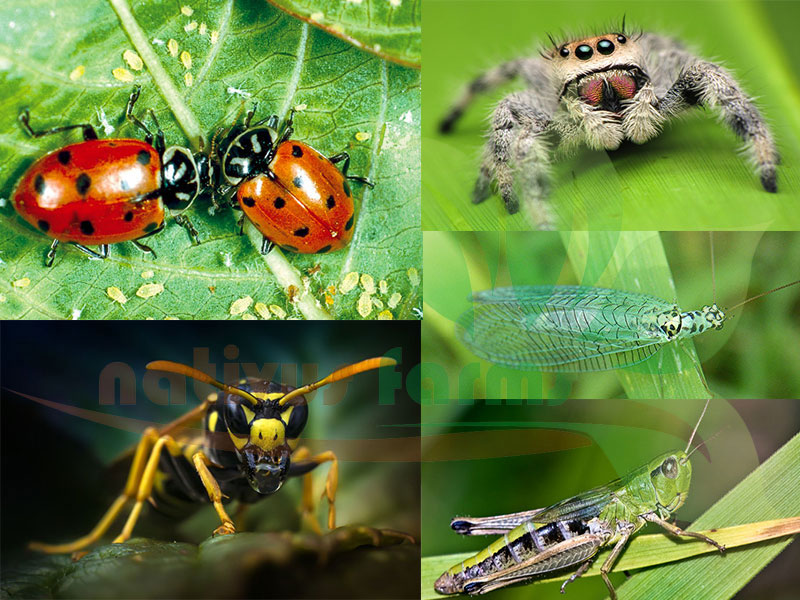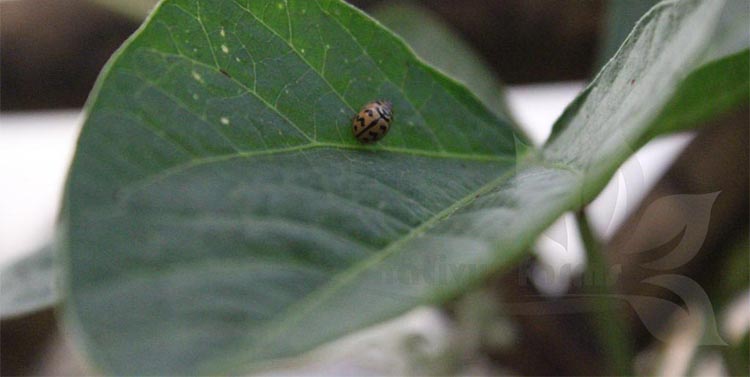
A very disturbing thing about today‘s reality is that many people are unaware about the friendly insects that are present in the gardens, fields along with the harmful insects. For example: there are some insects that eat termites and some friendly parasites that survive on termites. Therefore if these parasites are identified and protected, they in turn protect the crop from fungus.
The important thing we need to realize is that all the insects that are found in the farms are not harmful; there are insects that are friendly which Mother Nature created as a natural insecticide to destroy the harmful insects. During the time when there are no chemical pesticides, insecticides these friendly insects were the only source for protecting the farms from fungus and thus help the farmers to produce quality products. But when the chemical pesticides and insecticides came into the markets, the farmers started to use them in intolerable quantities which in turn are destroying all the friendly insects along with the harmful ones.
DO YOU KNOW?
1. One spider can eat 24 green leaf hoppers in a day
2. One Ladybird Beetle can eat 34 aphids, 8 green leaf hoppers and 13 gram caterpillar eggs in a day.
HOW TO CONSERVE?
- If we could protect all the friendly insects that are naturally found in the environment, we will be relieved from the problem of termites. To do this the farmers should take the experts advise as to how much insecticides should be used so that the friendly insects won’t die.
- Crop rotation and inter crop cultivation are also some of the effective solutions.
- Growing the plants which attract friendly insects around the crop is also effective.
- Increasing the usage of bio fertilizers and decreasing the usage of chemical fertilizers will increase the population of friendly insects in a farm.
- By using the methods of green revolution one can increase the produce with less cultivation costs.
LADY BUG BEETLES:
Lady bug Beetles have red wings with black spots on it. These are generally found in cotton fields. When these are in the larva stage they feed on aphids. A ladybird beetle lays 300-400 thin yellowish eggs under the surface of the leaf. Once the baby beetles are born they eat termites for the first 7-10 days whereas the mother beetle eats the termites for 40-45 days.
GRASS HOPPER:
Grass hoppers used to be literally everywhere but nowadays we can rarely find one. These are also friendly creatures to farmers. Grass hoppers are also called “Praying Menty”. These eat the insects which suck the sap of the leaves and also aphids.
WASP:
Wasp is a parasite that can consume 200 varieties of aphid’s eggs. A mother wasp lays 67-113 eggs at once. The lifespan of a wasp is 7-8 weeks. In a year 36 generations are produced. A wasp keeps its eggs along with the eggs of gram caterpillar. And a wasp baby comes out by killing the eggs of the gram caterpillar.
The young dark colored wasps protect the farm from hairy caterpillars, fruit borer, microvilia, mirids, damsel flies, dragon flies, kathera insects etc by eating them.
SPIDER:
Spiders are found in different shapes and sizes. They generally eat aphids, leaf curl, green fly, red mite eggs and larvae. We can generally find the spider’s eggs on top of the leaf’s surface in whitish brown color covered by a thin layer.These eggs can be seen moving when the plant moves.
CHRYSOPA:
These are dragon fly like insects which have green colored wings. Their Length is between 1 to 1.3 cm, width is 12 mm and have golden colored eyes. These insects generally lay their eggs under a leaf’s surface or under any other parts of the plant. These take 3 to 4 days to come out of the eggs. At first they are in white color and later changes to whitish color. In the larva stage they undergo change 3 times and then take 8-10 days to completely grow. These have large teeth which helps them to eat termites. They eat Aphids, white flies, green flies in the larva stage and then they eat gram caterpillar, hairy caterpillar and tobacco caterpillar in their first stage. The worst part is they are so less in number that these are artificially made and are being supplied.
SOLUTION TO THE PROBLEMATIC FUNGUS:
The crop where insecticides are not used attracts the friendly insects which clears the problematic fungus naturally. And this would be environmental friendly. The chemical pesticides and insecticides are so harmful that they can actually kill the human who is spraying it on the plants so now imagine about the insects it is being sprayed on. They die an instant death. So it is necessary to protect the friendly insect which does so much good to the farmers. And if the problem of termites is on a high level then it is advisable to spray the insecticides without harming the friendly insects.

